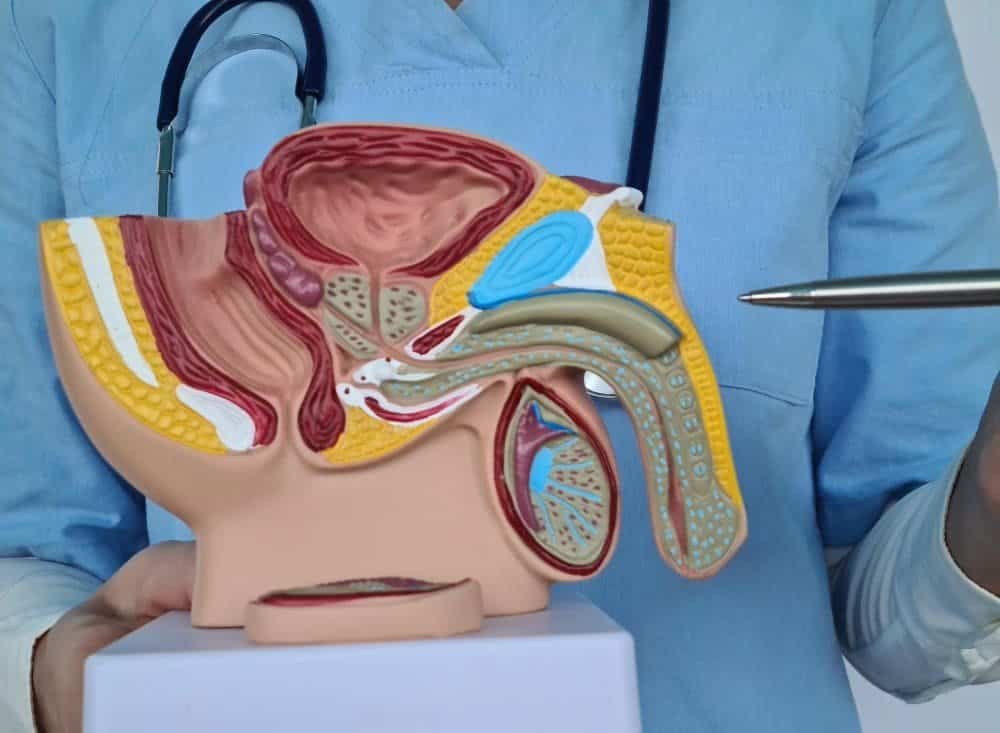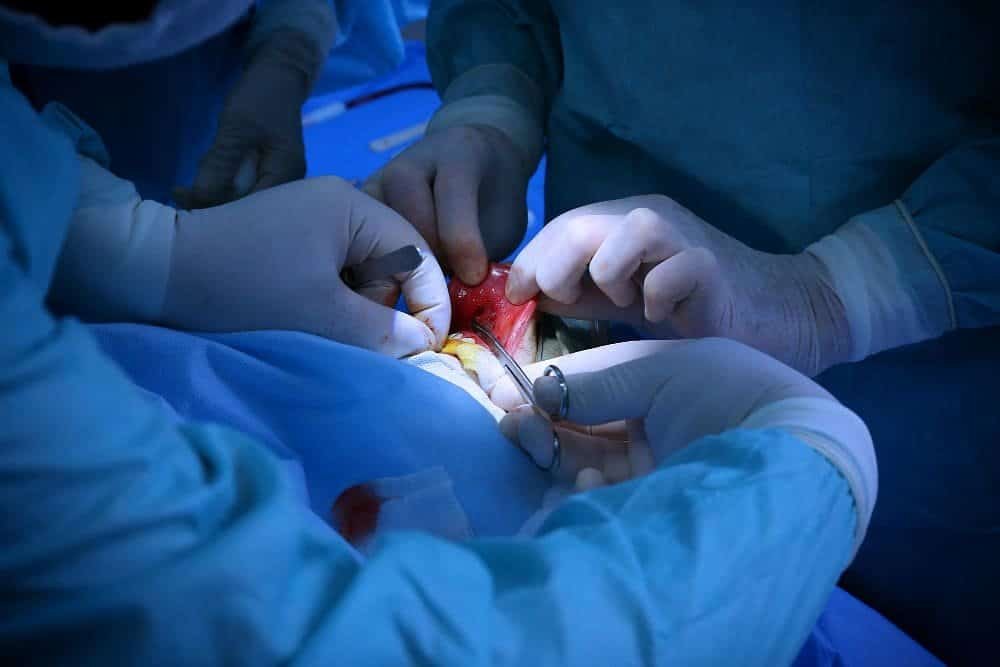Facing a varicocele diagnosis can be unsettling, but understanding your options is the first step toward relief. Let’s explore the key differences when considering varicocele embolization vs surgery. This guide will help you navigate your path to recovery.

What Exactly Is a Varicocele?
A varicocele is the dilation or enlargement of the pampiniform plexus, which are the veins within your scrotum. Think of them as varicose veins, but located near the testicles instead of the legs. This condition is quite common, affecting about 15% of the general male population and is a leading cause of male infertility, found in up to 40% of men experiencing fertility issues.
These enlarged veins can cause a range of symptoms or, in some cases, none at all. When symptoms do appear, they can include:
- A dull ache or sharp pain in the scrotum, especially after standing or exercising.
- A feeling of heaviness or swelling in the scrotum.
- Visible, enlarged veins that may feel like a “bag of worms.”
- Testicular atrophy, where the affected testicle may shrink.
The underlying issue is faulty valves in the testicular vein (the venous system draining the testicles). These valves are supposed to ensure one-way blood flow back to the heart. When they fail, blood can flow backward and pool in the veins of the scrotum, causing them to enlarge and creating a varicocele.
The diagnosis is typically made during a physical exam and confirmed with a Doppler ultrasonography, which uses imaging to visualize blood flow and confirm the presence of the varicose veins.
Why Seek Treatment for Varicoceles?
While not all varicoceles require intervention, there are compelling reasons to consider treatment. The primary goals of varicocele repair are to alleviate symptoms and, in many cases, improve fertility.
- Pain and Discomfort: Persistent pain and swelling can significantly impact your quality of life. Treatment aims to block the enlarged vein, which resolves the pressure and discomfort.
- Male Infertility: Varicoceles are a correctable cause of male infertility. The pooled blood increases the temperature in the scrotum, which can negatively affect sperm production and function. Surgical correction or embolization can restore normal blood flow, decrease the testicular temperature, and often lead to improved semen parameters and higher pregnancy rates.
- Testicular Health: A varicocele can sometimes lead to decreased testicular volume. Treating the varicocele can halt or even reverse this shrinkage, particularly in adolescents, preserving testicular function.
If you are experiencing any of these issues, discussing treatment options with a medical specialist is a crucial next step. Two primary approaches are available: traditional surgical methods and a minimally invasive procedure called percutaneous embolization.
A Deep Dive into Varicocele Surgery (Varicocelectomy)

Varicocele surgery, known as varicocelectomy, has long been the standard treatment. The fundamental goal of the surgical approach is ligation, which means the surgeon ties off the enlarged veins to stop the backward flow of blood. This forces the blood to reroute through healthier, non-dilated veins.
There are several surgical approaches a urologist might use:
- Microsurgical Varicocelectomy: This is often considered the most advanced and effective surgical technique. It is performed through a small incision in the groin. The surgeon uses a powerful microscope to magnify the area, which allows for precise identification and ligation of the problematic veins while carefully sparing the testicular artery, lymphatic vessels, and vas deferens. This precision helps lower the risk of complications.
- Laparoscopic Varicocelectomy: This is a minimally invasive surgical option. The surgeon makes several tiny incisions in the abdomen and inserts a laparoscope (a small camera) and surgical instruments. The surgeon can then view the internal veins on a monitor and perform the ligation. This approach is effective but typically requires general anesthesia.
- Open Surgical Ligation: This traditional method involves a larger incision in the groin or abdomen to access and tie off the veins. While still performed, it has a higher risk of postoperative complications compared to microsurgical techniques.
Surgical procedures are usually performed on an outpatient basis but require either general or regional anesthesia. Recovery time can vary, with patients often advised to avoid strenuous activity for two to three weeks. Potential risks include infection, bleeding, and the formation of a hydrocele (fluid buildup around the testicle), as well as the risk of persistent or recurrent varicoceles.
Understanding Varicocele Embolization: The Minimally Invasive Alternative 🤔
Varicocele embolization is a highly effective, non-surgical treatment performed by a board-certified interventional radiologist. This endovascular procedure offers an excellent alternative to surgery, providing comparable success rates with a significantly shorter recovery period and fewer potential complications. Embolization procedures are performed on an outpatient basis, meaning you can return home the same day.
Here’s how the percutaneous embolization procedure works:
- Access: The patient receives a local anesthetic to numb a small area, usually in the groin or neck. The interventional radiologist then makes a tiny nick in the skin to insert a thin tube called a catheter into a large vein.
- Imaging Guidance: Using real-time X-ray imaging called venography, the radiologist carefully guides the catheter through the venous system directly to the faulty testicular vein causing the varicocele. This imaging allows for a precise roadmap of your unique anatomy.
- Blockage: Once the catheter is in place, the radiologist will block the enlarged vein. This is most commonly done by deploying tiny, soft platinum coils. These coils act as a barrier, stopping the backward flow of blood. Sometimes, a sclerosing agent is also used to help close the vein.
- Completion: With the blood flow blocked, the catheter is removed. The pooled blood is rerouted to healthy veins, and the pressure in the scrotum is immediately relieved. The enlarged varicocele will then shrink and eventually disappear over time.
The entire procedure typically takes about an hour. Because it is minimally invasive and avoids general anesthesia, the recovery is remarkably fast. Most patients can return to normal, non-strenuous activities within a day or two. 💪
Head-to-Head Comparison: Varicocele Embolization vs Surgery
To better compare the two primary treatments for varicoceles, let’s look at them side-by-side. This comparison can help you understand the key differences in the time of varicocele repair, recovery, and potential outcomes.
| Feature | Varicocele Embolization | Varicocele Surgery (Varicocelectomy) |
|---|---|---|
| Procedure Type | Minimally invasive, percutaneous | Surgical, involves an incision |
| Performed By | Interventional Radiologist | Urologist |
| Anesthesia | Local anesthesia with sedation | General or regional anesthesia |
| Incision | Tiny nick in the skin (groin/neck) | Small to large incision (groin/scrotum) |
| Recovery Time | 1-2 days | 2-3 weeks for full activity |
| Success Rate | Excellent technical success rate (~90%) | Excellent success rate (~90-95%) |
| Risk of Hydrocele | Extremely low risk | 1-9% risk, depending on technique |
| Postoperative Pain | Minimal, managed with over-the-counter pain relief | Mild to moderate, may require prescription pain medication |
| Hospital Stay | Outpatient procedure (go home same day) | Typically outpatient, sometimes requires a short stay |
| Return to Work | 1-2 days | 1-2 weeks, depending on job demands |
Why Many Patients Prefer Percutaneous Embolization
When reviewing their treatment options, many patients find the benefits of Embolization compelling. The procedure is a preferred alternative to varicocelectomy for several key reasons:
- Faster Recovery: The ability to return to daily life within a couple of days is a major advantage, minimizing disruption to work and family commitments. On the day of the treatment, you walk in and walk out. 🗓️
- No Incisions or Stitches: Since embolization is performed through a tiny entry point, there are no surgical incisions in the sensitive scrotal area, which also means no scarring.
- Lower Risk of Complications: Embolization has a significantly lower risk of common postoperative complications. The risk of developing a hydrocele, a frequent concern with surgical ligation, is virtually eliminated with this endovascular approach.
- Effective for Recurrence: For patients whose varicoceles persist or return after surgery, embolization is an excellent and highly effective option to treat the problem definitively.
Dr. Samir Abdel Ghaffar, a respected consultant in interventional radiology, specializes in these advanced, minimally invasive treatments. His expertise ensures that patients receive the highest standard of care, benefiting from the precision and safety that modern endovascular techniques offer.
Success Rates and Long-Term Outcomes ✅
Both varicocele surgery and embolization offer excellent outcomes for patients. The technical success rate—meaning the ability to successfully block the problematic veins—is very high for both methods. Studies that compare the two approaches show comparable results in terms of resolving pain and swelling.
Furthermore, both treatments have been shown to be effective in improving fertility. Many patients who undergo either procedure see an improvement in semen analysis results and an increase in pregnancy rates.
The choice between the two often comes down to a comparison of the recovery process and potential risks rather than a significant difference in long-term effectiveness. Your medical team can review your case and help you decide which option is the best fit for your specific condition and lifestyle.
Making the Right Choice for Your Health 👨⚕️
Deciding between varicocele embolization vs surgery is a personal decision that should be made after a thorough discussion with a qualified medical professional. The journey begins with an accurate diagnosis, and a Doppler ultrasonography is essential to confirm the presence and severity of the varicocele.
It is important to discuss all aspects of the procedures, including the recovery, potential risks, and benefits, with a specialist who can offer a comprehensive review of your case. As a board-certified interventional radiologist, Dr. Samir Abdel Ghaffar is uniquely positioned to evaluate if you are a candidate for percutaneous embolization and to answer all of your questions about this state-of-the-art treatment.
If you are suffering from varicocele pain or dealing with male infertility, know that effective and minimally invasive options are available. Varicocele embolization represents a major advancement in medical care, offering a safe, effective, and patient-friendly alternative to traditional surgery. To learn more and find out if this treatment is right for you, schedule a consultation today.
 العربية
العربية 

